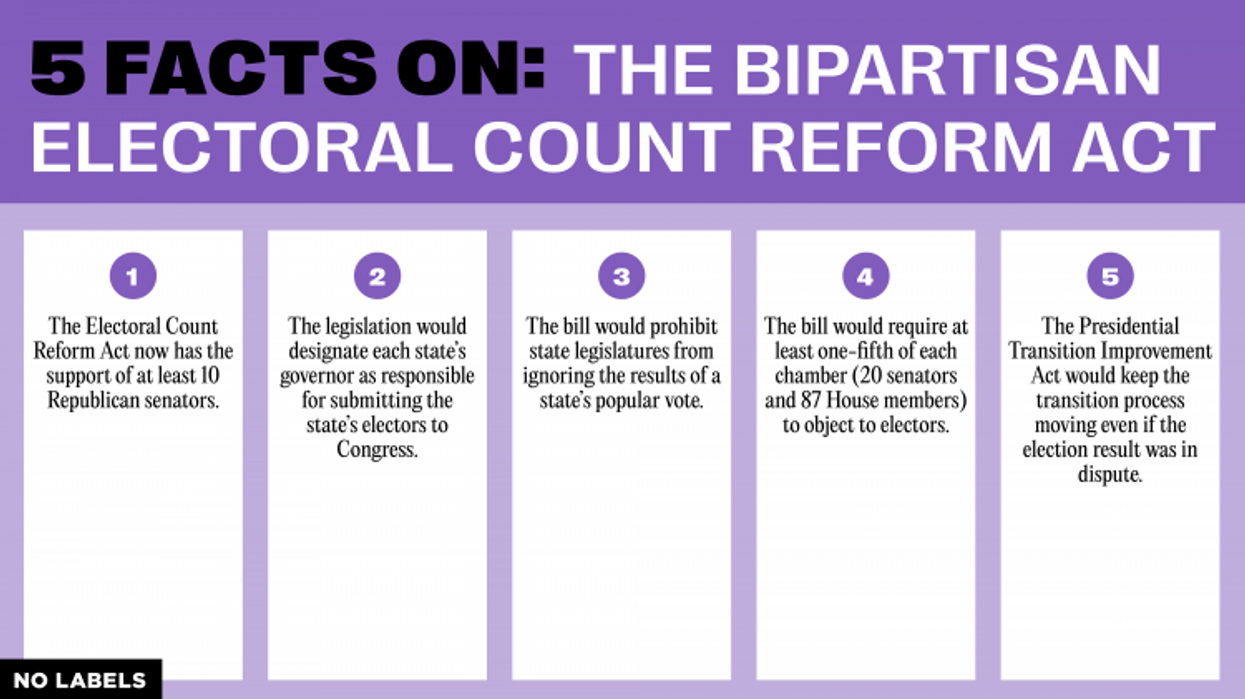
The Big Insight: The bipartisan Electoral Count Reform Act would reduce the chances of a disputed presidential election in 2024 and close loopholes in existing law.
After months of negotiations, the Electoral Count Reform and Presidential Transition Improvement Act is moving through the Senate. The legislation is an important step to avoid the 2020 post-election chaos that culminated in the January 6 riots. In addition to making it clear that the role of the vice president in the counting of electoral votes is purely ceremonial, the bill would make important changes to the way votes in presidential elections are tallied.
1. The Electoral Count Reform Act now has the support of at least 10 Republican senators.
The legislation had nine original Republican cosponsors. With Sen. Chuck Grassley (R-IA) saying in early September that he supports the bill, and with unanimous Democratic support expected, the bill should have the 60 votes needed to advance to a final Senate vote.
2. The legislation would designate each state’s governor as responsible for submitting the state’s electors to Congress.
This provision is intended to ensure that states do not submit multiple electoral slates in the wake of an election. The bill would also expedite judicial review of any dispute over a state’s certified electors, including provisions for direct appeal to the U.S. Supreme Court.
While critics warn that the legislation could let a governor singlehandedly overturn the will of a state’s voters, it would prohibit any official from certifying the wrong candidates as winners under each state’s election laws. This would inhibit 2020 election deniers like Kari Lake and Doug Mastriano, Republican nominees for governor in Arizona and Pennsylvania respectively, from overturning their states’ votes if elected.
3. The bill would prohibit state legislatures from ignoring the results of a state’s popular vote.
Just as the legislation would require governors to certify the legitimate winners in their states, it would make it clear that legislatures cannot overturn the results. The bill would allow states to alter or revise the time of an election due to “extraordinary and catastrophic events,” but would prevent officials from doing anything after the election to change the outcome.
4. The bill would require at least one-fifth of each chamber (20 senators and 87 House members) to object to electors.
Right now, just one senator and one representative need to object to an elector or slate of electors from a state to force votes in both chambers over whether to accept or reject their votes. Following the 2004 election, an objection from just one Democrat in each chamber resulted in a vote on whether to disqualify Ohio’s electors for George W. Bush — even though Democrat John Kerry was not contesting the result.
5. The Presidential Transition Improvement Act would keep the transition process moving even if the election result was in dispute.
After the 2020 election, it fell to the Administrator of the General Services Administration alone to decide when to begin allowing federal resources to be used for the transition to the new president. The legislation would let a candidate whose election seemed probable but not certain to receive such support.

